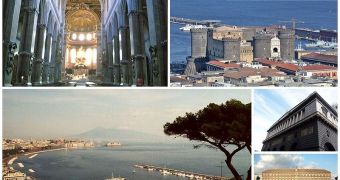Even though Italian authorities have tried to reestablish Naples' dignity for years, it seems that they didn't manage to come up with effective solutions to clean-up the city of pizzas.
Prime Minister Silvio Berlusconi identified the problem, but was unable to deal with Naples' small and inefficient landfills which have to keep up with the city's dense population.
After garbage collection actions stopped being organized in 2007 and 2008, the city which otherwise offers great sights for the eyes of tourists, started to gather mountains of trash which are now everywhere.
While authorities seem to be unable to handle this situation, Sabox Green, a recycling company, is trying to adopt new strategies which might solve this issue.
Not everything which is green is also cost-free, therefore the enterprise tried to come up with a marketing plan which would allow them to take care of Naples' great problem while also making a decent profit.
Sabox Green launched on the market several furniture products manufactured from recycled cardboard and paper coming from the inhabitants of the city of pizza.
The DIY innovative kind of furniture comes delivered as a kit and the new owner have to assemble it. Even thought it is 100% made out of cardboard, manufacturers say it is actually practical and sustainable.
Some potential clients might be skeptical when they open a box and take a look at the furniture kit which weights a little over 4 pounds.
Despite this fact, such an innovative item seems to have special powers, since it is able to sustain up to 600 pounds.
In order to offer resistant products with an outstanding appearance, the company works in partnership with designer Generoso Parmegiani. Their pieces of furniture are also quite affordable, costing less than $200.
Using old paper and cardboard which is no loner needed is also eco-friendly if we think about the fact that the process of turning such products into great-looking furniture requires only a third of the amount of power demanded while processing virgin cellulose.
So this initiative also counts as an effective way of preserving energy.
Their strategy of making profit while preserving Naples' appearance and dignity represents a project with multiple benefits.
“Sabox mixes the best and worst Italy has to offer: the garbage of the Naples' area, which shamed us, and the design, creativity, and resilience we are known for,” concluded the company's officials.

 14 DAY TRIAL //
14 DAY TRIAL //